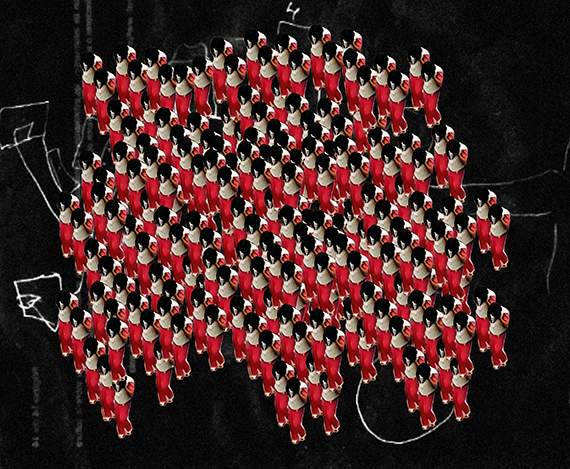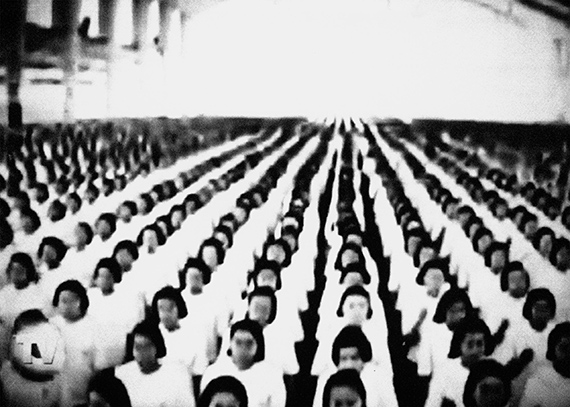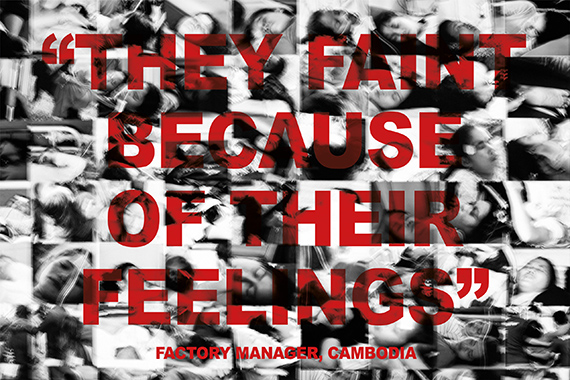
from the series "On Mass Hysteria", 2023
© Laia Abril, courtesy Galerie Les Filles du Calvaire
Laia Abril »
On Mass Hysteria
Exhibition: 30 Jun – 1 Oct 2023
Thu 29 Jun 18:00

PHOTO ELYSEE
Place de la Gare 17
1003 Lausanne
+41(0)21-3169911
Wed-Mon 10-18, Thu 10-20

from the series "On Mass Hysteria", 2023
© Laia Abril, courtesy Galerie Les Filles du Calvaire
Artist Laia Abril (Spain, 1986) uses photography, archival documents and multimedia to create her highly political projects, often related to feminist issues and imbued with sociological, historical and anthropological insights. Her long-term projects are structured into different chapters.
The artist will be presenting her latest project at Photo Elysée: On Mass Hysteria (Genesis Chapter), the first draft of which led to her nomination for the Prix Elysée (2018-2020). Mass hysteria is a reaction to circumstances in which women are under extreme stress, feel repressed, or are forced into situations where they cannot communicate or express their thoughts and emotions.
On Mass Hysteria allows us to visualize this language of the pain of female representation throughout history.

from the series "On Mass Hysteria", 2023
© Laia Abril, courtesy Galerie Les Filles du Calvaire
On Mass Hysteria
Evil witches were accused and executed in Salem, while possessed nuns meowed and had seizures across Europe. Hand-trembling epidemics spread among Swiss and German boarding schools, and laughing attacks widespread among Tanzanian girl’s students. Female adolescents in Afghanistan experienced fainting outbreaks, while over 600 boarding schoolgirls suddenly lost the ability to walk straight at a boarding school in Mexico. In Cambodian garment factories, thousands of women faint inexplicably during the last decade, and American cheerleaders tick compulsively and have seizures without a biological explanation.
Mass hysteria, or Mass psychogenic disorder – a term now more widely accepted – arises in tightly knit environments burdened by unbearable and inescapable social circumstances. When a stress trigger event unfolds, the group starts experiencing uncontrollable motor symptoms simultaneously, such as trembling, weeping, twitching, ticking, or even fainting. These involuntary symptoms, often resembling trance-like states, can persist for months and have non-organic origins. Although studied from diverse cultural and academic interpretations, two essential questions remain unresolved: How does it spread, and why does it predominantly affect young women, especially teenage girls?
Historically, the term hysteria has been employed to pathologize women perceived as "difficult." Medical historian Robert Woolsey suggests it could serve as a "protolanguage," with its symptoms functioning as "a code used to convey a message which, for various reasons, cannot be verbalized."
Exploring Mass Hysteria further as a form of unconscious protest, we discover that outbreaks often influence those in lower social positions confronted with challenging situations, such as life in strict boarding schools, laboring in factories with inhuman conditions, or dwelling in isolated religious institutions like convents. Dr. Josefina Ramírez, a Mexican physical anthropologist, offers an insightful perspective: Mass Hysteria might be a collective physical response that symbolizes the struggles these young women endure due to unequal social power dynamics.
The genesis chapter of
A History of Misogyny
, titled
On Mass Hysteria
, investigates the possibility of an ancient female protolanguage of protest. The project challenges the prevailing psychological approach that blames women for medically unexplained maladies. Instead, it emphasizes the impact of societal factors such as social and political oppression.
On Mass Hysteria
aims to visualize the collective pain of transgenerational trauma that is often ignored or diminished by society, passed down among women.
Laia Abril (Barcelona, 1986) is a multidisciplinary artist whose works center around the themes of women's rights, grief, and bio-politics. Her research-based practice employs photography, text, and sound to explore difficult and hidden realities. One of her most acclaimed projects, "A History of Misogyny," has been exhibited in over 15 countries and her artworks are held in collections such as the Centre Pompidou and FRAC in France, the Victoria & Albert Museum in London, and Photo Elysée and Fotomuseum Winterthur in Switzerland. Her career has earned her numerous accolades, including the 2016 Prix de la Photo in Arles, the 2020 FOAM Paul Huf Award in Amsterdam, the 2022 Hood Medal in London, and the 2023 Shpilman Award.
Laia is also a published author with several notable titles, such as
The Epilogue
(Dewi Lewis, 2014),
Lobismuller
(RM, 2016), which won the 2015 Images Vevey Best Book award; and
On Abortion
(Dewi Lewis, 2018), which was nominated for the Deutsche Börse Prize and won the 2018 Aperture-Paris Photo Best Book Award. Her most recent publication,
On Rape
, was released by Dewi Lewis in 2022. Abril is a lecturer at HSLU and is represented by the Parisian gallery Les Filles du Calvaire.

from the series "On Mass Hysteria", 2023
© Laia Abril, courtesy Galerie Les Filles du Calvaire